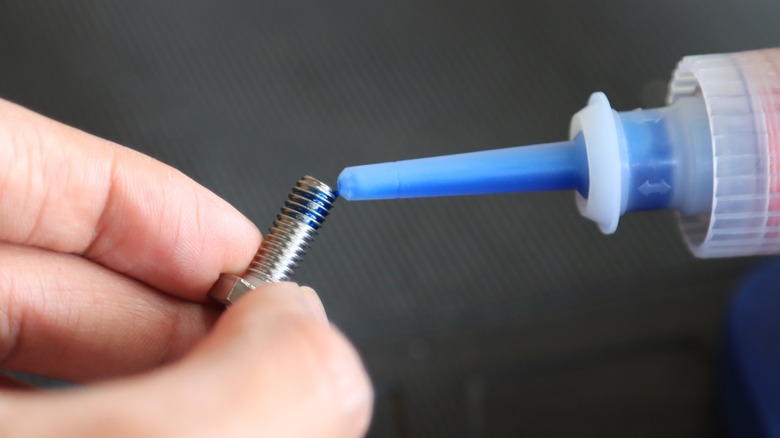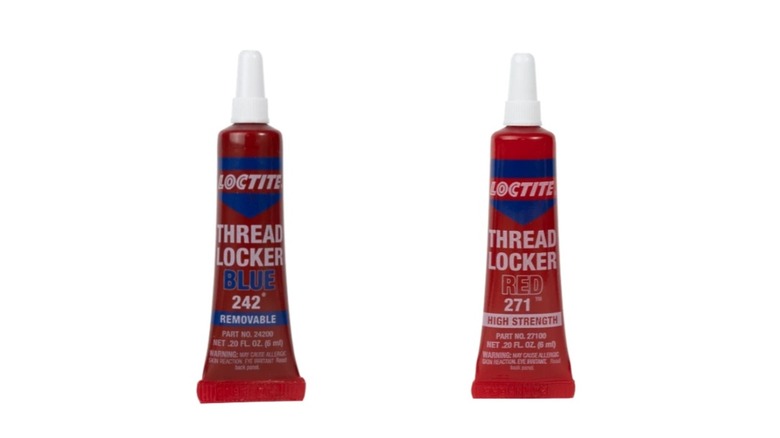Red Vs. Blue Loctite Threadlocker: What's The Difference And Which Color Is Strongest?
When installing fasteners such as nuts and bolts, it may not be enough just to tighten them. Sometimes hardware can inadvertently become unscrewed due to air gaps or through vibration, creating a real problem. Fortunately, threadlockers are a liquid product you can apply on the threads of fasteners, and help ensure they stay tight. One of the most popular brands of threadlocker is Loctite, which started as a product name (Loctite, the liquid locknut) in the 1950s and then became the name of the whole corporation in 1963. Henkel, which now owns Loctite, has a wide array of brands under its wing and achieved $23.5 billion in revenue for 2023, per Forbes.com.
With fasteners having so many applications, it's beneficial to have varying degrees of adhesive strength to apply to projects big and small. Loctite offers some different formulas that are easily identifiable by color, such as blue, red, purple, and green. Loctite's blue threadlocker provides a medium strength hold that is designed for fasteners that need to be undone periodically. Conversely, Loctite's red threadlocker is much stronger, designed for larger bolts and more challenging to loosen for a longer lasting adhesion (which might leave you asking if WD-40 can defeat Loctite.)
When should you use blue Loctite vs red?
The medium strength blue formula of Loctite's threadlocker is meant for fastener threads larger than 6 mm (1/4 inch) and smaller than 20 mm (3/4 inch) and is removable. The blue formula is going to be great for a wide range of domestic projects as it provides a hold, but still allows you to loosen with hand tools. Some common uses include securing firearm optics, repairing cabinet pulls with stripped threading, ensuring exercise equipment remains sturdy, installing aftermarket motorcycle modifications, and more. If you're working on your bike, in addition to some blue threadlocker, you might also consider some useful Milwaukee hand tools for your motorcycle.
The red formula is not only considered high-strength, but it can only be unstuck using temperatures of 500 degrees Fahrenheit applied to the fasteners. So, unless you want to break out the butane torch, this version of Loctite should only be used in permanent cases involving significant weight, and tension. In fact, it's recommended for bolts larger than 20 mm, or 7/8 of an inch and used for applications like securing automotive engine mounts, or suspension parts. You might be tempted to reuse old fasteners, but Loctite requires clean metal to work properly, and it's a common mistake people make when rebuilding engines. Another application concerns motorhomes, which often benefit from aftermarket stability products helping to reduce sway, such as a rear trac bar. An add-on like a trac bar attaches to the differential and chassis via huge bolts, and red Loctite is ideal for locking up those fasteners under extreme pressure.

